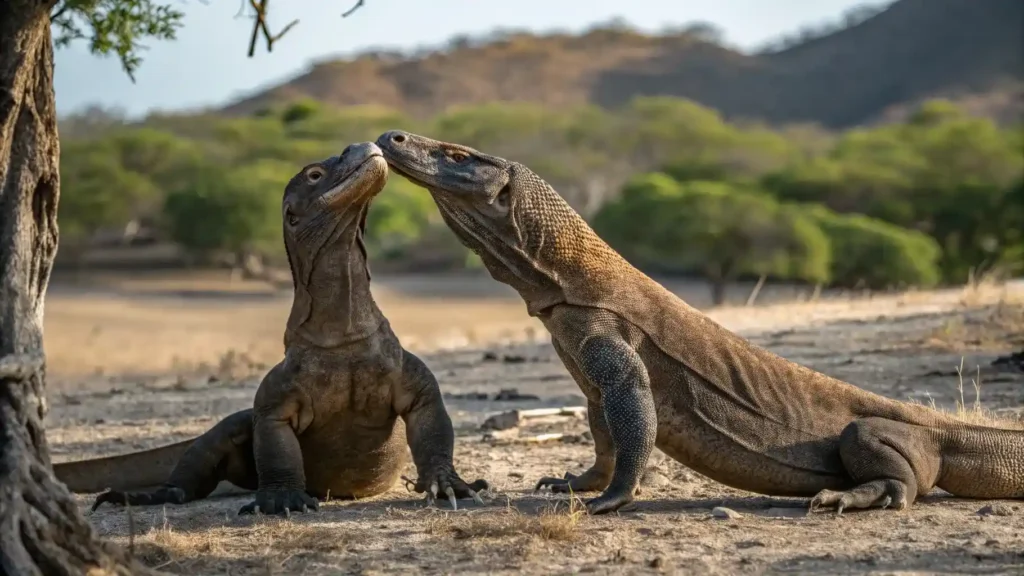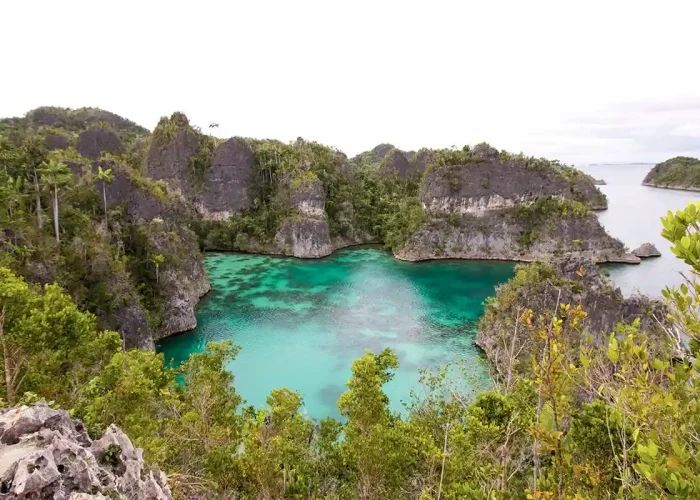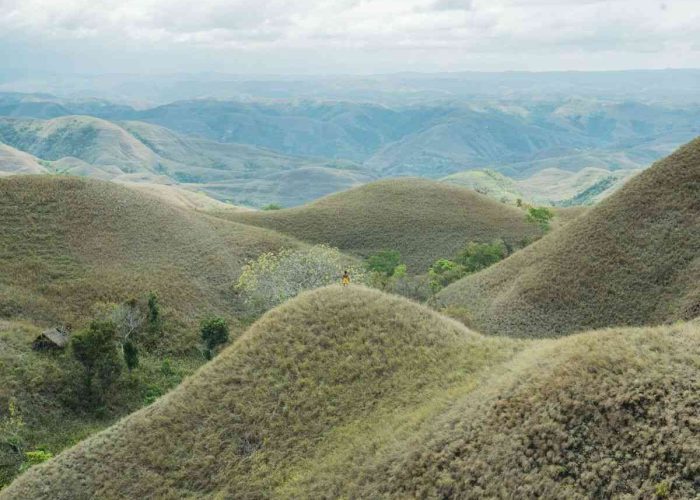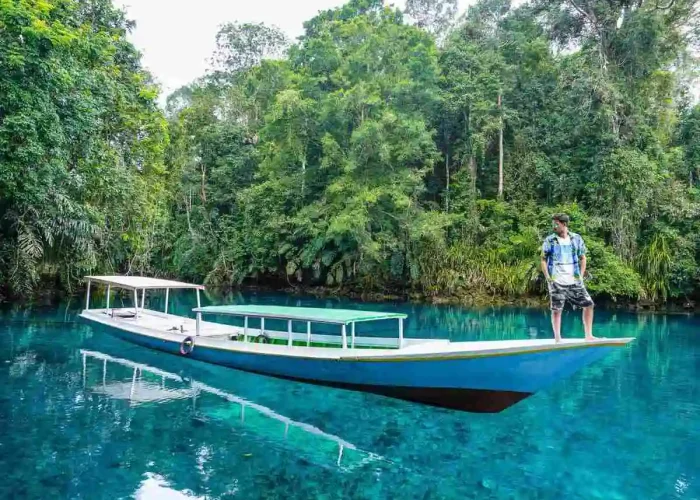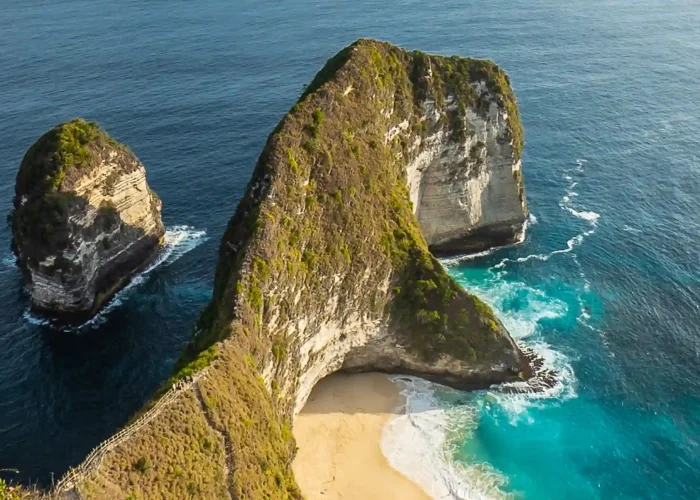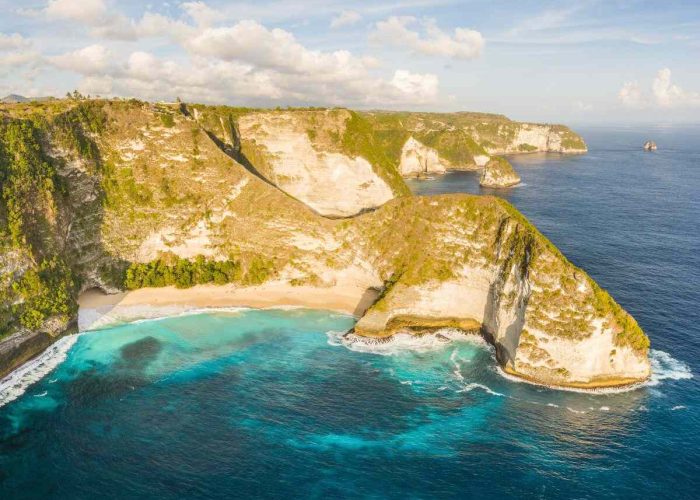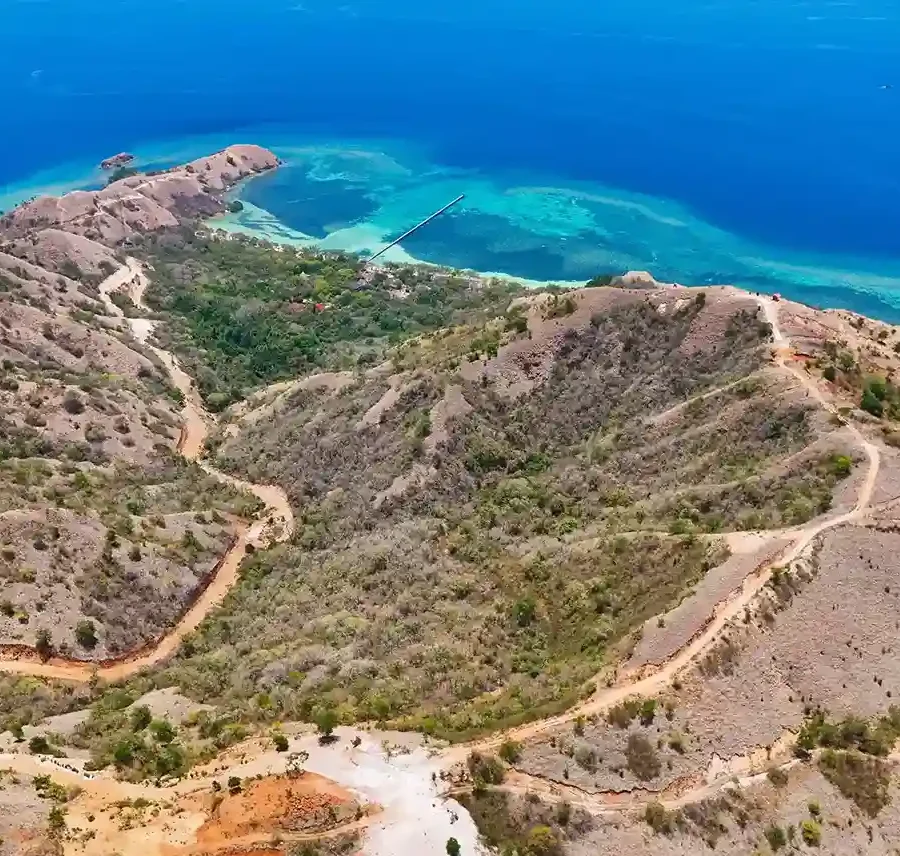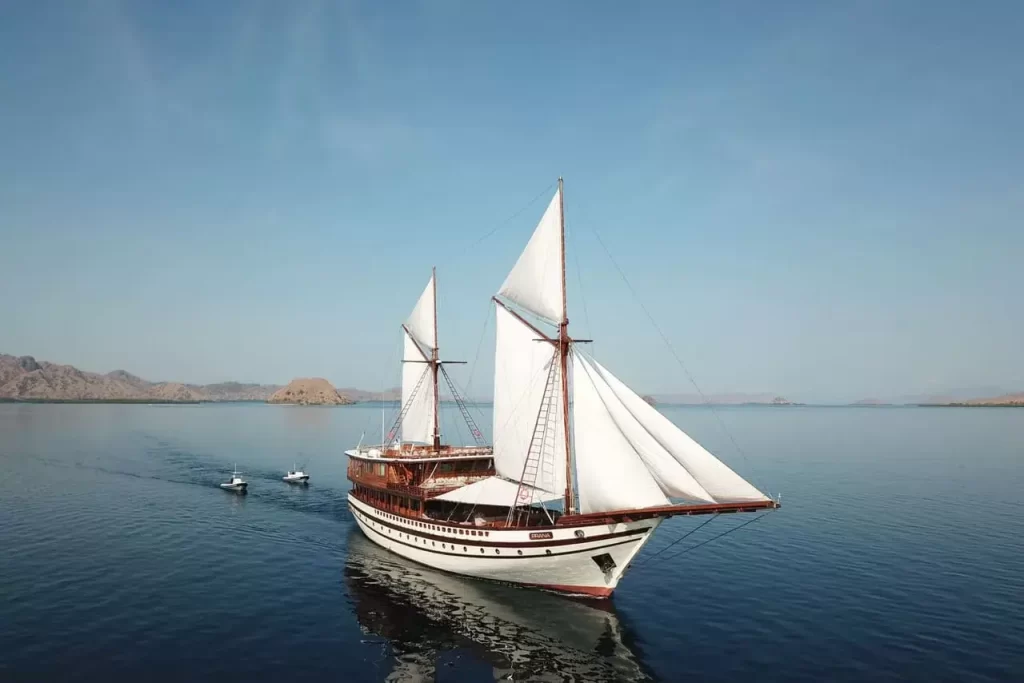If you’re curious about Komodo dragons, the giant reptiles found only in Indonesia, you’ve probably wondered: what is the difference between a male and female Komodo dragon? Understanding these differences doesn’t just help you learn more about this rare species, but it’s also useful for trekking, photography, and even supporting Komodo conservation when you visit Komodo National Park in Labuan Bajo. In this article, we’ll explore the physical, behavioral, habitat, diet, and reproductive differences between the two, along with tips on how to observe them safely in the wild. This way, you can enjoy a safer and more exciting experience.
Table of Contents
TL;DR
- Male Komodo dragons are generally larger, bulkier, and have wider heads than females.
- Female Komodo dragons are smaller, more slender, and have the unique ability to reproduce without males through parthenogenesis.
- Males tend to be more aggressive and territorial, while females focus on nesting and protecting their eggs.
- Their habitats differ too: males often occupy open, elevated areas, while females choose safer spots near food sources and nesting sites.
- With IndonesiaJuara Trip, you can safely observe the differences between male and female Komodo dragons directly in their natural habitat.
What is the Difference Between a Male and Female Komodo Dragon?
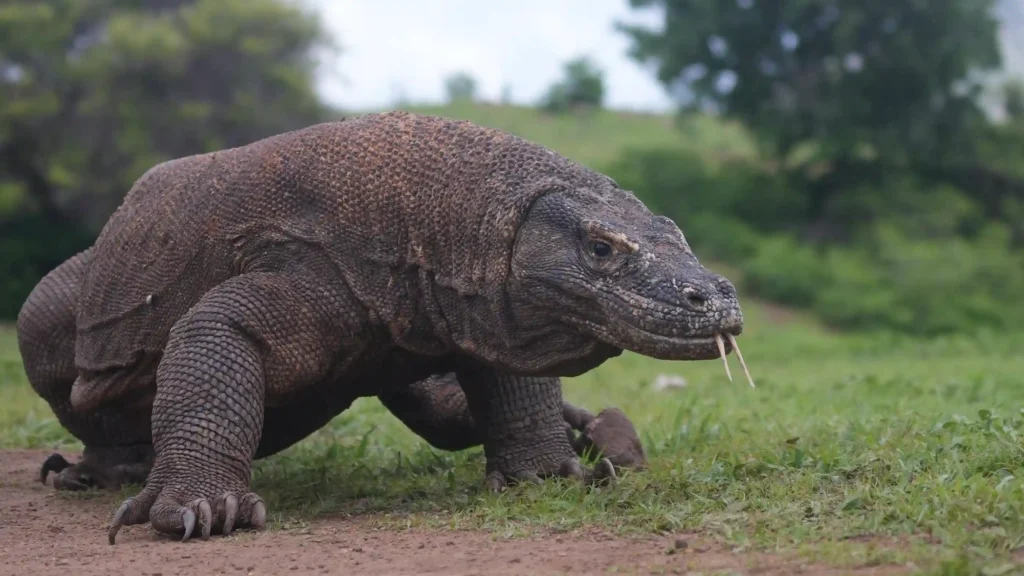
The differences between male and female Komodo dragons can be seen in several aspects, from physical traits to behavior, reproduction, habitat, and feeding habits. Understanding these distinctions helps you appreciate the species more and teaches you how to interact respectfully when observing them in the wild. Below, we’ll break down the key differences in detail.
| Aspect | Male Komodo Dragon | Female Komodo Dragon |
| Body Size | Larger: 2.5–3 m, 70–90 kg | Smaller: 2–2.5 m, 40–60 kg |
| Head Shape | Wider head with stronger jaws | Slender, narrower head |
| Behavior | More aggressive; territorial, especially during mating season | More cautious; focuses on feeding and nesting |
| Reproductive Role | Fertilizes eggs; follows and courts the female | Lays 15–30 eggs; capable of parthenogenesis; guards the nest |
| Habitat Preference | Occupies large, strategic areas, often on higher ground | Stays in safer areas near food sources and nesting sites |
| Diet Pattern | Hunts larger prey; eats large amounts at once | Prefers smaller prey; eats smaller portions more frequently |
Physical Differences Between Male and Female Komodo Dragons
One of the easiest ways to distinguish male and female Komodo dragons is by looking at body size and head shape. Males are typically larger and heavier, reaching 2.5–3 meters long and weighing around 70–90 kilograms. Females, on the other hand, are smaller, measuring around 2–2.5 meters and weighing 40–60 kilograms.
Beyond size, head structure is also a clear indicator. Males have wider heads with stronger jaws, while females have more slender heads. This larger body proportion in males also helps them compete with other males, either for territory or for mates. So when you’re trekking, size and shape are the first clues you can use.
Behavioral Differences Between Male and Female Komodo Dragons
Aside from physical features, behavior also plays a big role in telling males and females apart. Male Komodo dragons are generally more aggressive, especially during mating season. They defend their territory through combat or dominance displays. Females, meanwhile, are more cautious and focus on feeding and taking care of their eggs.
Females also actively search for safe nesting locations and dig burrows to lay eggs, something males rarely do. So if you spot a Komodo dragon digging a hole or guarding a nest, it’s almost certainly a female.
Reproductive Differences in Komodo Dragons
Komodo dragons have a fascinating reproductive system. Females lay the eggs, while males contribute through fertilization. Interestingly, female Komodo dragons can reproduce without mating through parthenogenesis, meaning they can produce offspring without male sperm.
During mating season, males follow females and try to attract them through courtship behavior, sometimes gently biting the female’s neck. After mating, the female looks for a safe nesting spot and typically lays 15–30 eggs. These will hatch after 7–8 months. Their reproductive roles are clearly different, yet both are essential for the species’ survival.
Habitat and Territory Differences Between Male and Female Komodo Dragons
Male and female Komodo dragons also have different habitat preferences. Males tend to occupy larger and more strategic areas, including elevated spots where they can monitor their surroundings and compete with other males. Females stay closer to safe zones near food sources since they need energy for nesting and egg care.
When trekking on Komodo or Rinca Island, you’ll likely see males in open, strategic locations, while females move in safer areas or near nesting burrows. Understanding these patterns helps you observe them more closely without disturbing them.
Differences in Diet and Eating Behavior
Another noticeable difference is their feeding behavior. Males usually hunt larger prey like deer or adult wild boars due to their larger size. Females, however, tend to choose smaller or easier-to-catch prey, especially during nesting season.
Additionally, males typically eat large amounts at once and rest for long periods afterward. Females eat more frequently but in smaller portions. These feeding patterns are often visible when observing them in their natural environment.
Read more: How Long Do Komodo Dragons Live? Check the Facts Here!
How to Tell the Difference Between Male and Female Komodo Dragons in the Wild?
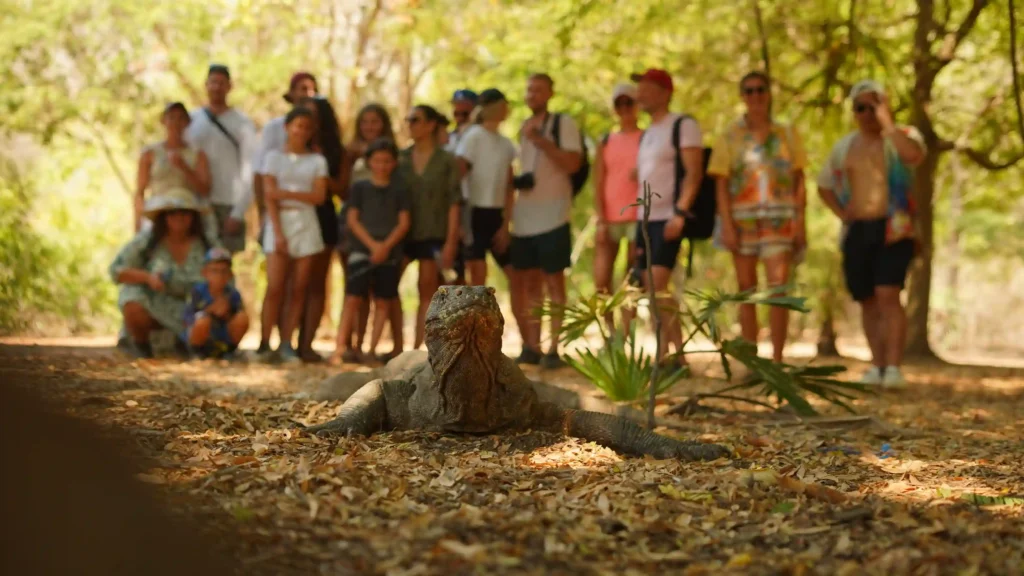
If you want a safer and more enjoyable trekking experience, it’s helpful to know how to distinguish male from female Komodo dragons in the wild. Here are some tips you can follow:
- Pay attention to size and body proportions – Males are usually bigger and bulkier. When you see two Komodo dragons side by side, size is the quickest clue.
- Watch their behavior – Males tend to be more aggressive and territorial, while females focus on finding food or guarding nests.
- Observe their head shape – A wider head with strong jaws indicates a male, while a slimmer head likely belongs to a female.
- Look at their activity – If a Komodo dragon is digging or tending to a nest, it’s almost certainly a female.
Remember, local guides or rangers are your best help. They know the dragons’ favorite spots, movement patterns, and nesting areas, so you can have a safe and educational experience.
Safety Tips for Observing Komodo Dragons in Their Natural Habitat
Seeing Komodo dragons in the wild is definitely an exciting experience, but you still need to pay attention to safety so your adventure stays comfortable and risk-free. Here are a few safety tips for seeing Komodo dragons in their natural habitat:
- Follow your local guide’s instructions – They understand Komodo behavior and know where it’s safe to observe them.
- Keep a 3–5 meter distance – Especially from aggressive males. Keeping your distance lets you observe safely.
- Do not disturb Komodo dragons or their nests – Particularly females guarding their eggs. Respecting them ensures safety for both you and the animals.
- Wear comfortable clothing and footwear – Trekking on Komodo or Rinca can be challenging, so proper gear is essential.
- Avoid loud noises or sudden movements – Komodo dragons can get stressed or react aggressively if startled.
- Join a trusted tour operator – With IndonesiaJuara Trip’s 10+ years of experience, you’ll explore safely while learning about the unique behaviors of both male and female Komodo dragons.
Read more: When Is the Best Time to See Komodo Dragons? Must-Know Info for Travelers!
Let’s Visit Komodo National Park and See Male & Female Komodo Dragons with IndonesiaJuara Trip!
To sum it up, the differences between male and female Komodo dragons are clear, from the males’ larger size, bulkier build, and territorial behavior to the females’ smaller frame and nesting activities. You can observe these distinctions easily while trekking in their natural habitat in Komodo National Park.
If you’re excited to see both male and female Komodo dragons up close, you can join a Labuan Bajo tour with IndonesiaJuara Trip. With a well-organized itinerary, professional local guides, and a comfortable experience, you can focus on trekking, photography, and enjoying unforgettable moments with these incredible reptiles. Beyond seeing Komodo dragons, you’ll also explore stunning spots like Padar Island, Pink Beach, and many other scenic locations around Labuan Bajo. So if you’re looking for a trip that’s fun, informative, and well-organized, IndonesiaJuara Trip is ready to make it happen.


